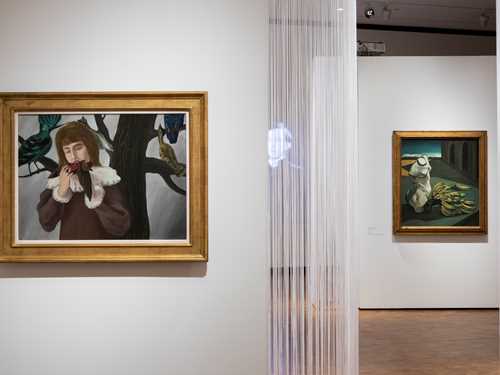Maya Deren: Meshes of the Afternoon (1943), 18 min, Silent, Black/white
Maya Deren: At land (1944), 15 min, Silent film, Black/white
Germaine Dulac: The Seashell and the Clergyman (1928), 40 min, Silent film, Black/white
Introduction by Emil Leth Meilvang.
These films represent a negotiation and critique of the philosophical gender concepts that are integral to the surrealist understanding of aesthetics. The matinee is part of a film programme shown in three parts and made in connection with the exhibition The Savage Eye.
Surrealism’s problematic approach to the idea of ‘woman’ and the ‘feminine’ has remained a historical and cultural fact. Reading the group’s publication Researches Into Sexuality today, you find a group of artists full of internal discord around the question of sexual liberation. Several core members present quite misogynistic attitudes, where women are seen as the other. However, not all surrealists were cut from the same cloth. Several members thought differently and argued for a more extensive inclusion of themes around gender and the body in art. Despite these fundamental disagreements, surrealism was the movement that included the most female artists in the European interwar period. When surrealist groups emerged on other continents, its philosophy was used as an argument for greater gender and sexual diversity.
About the film programme
What possibilities does the filmic medium hold? This is exactly what the surrealist movement explores – in the process creating several new breakthroughs in the art of film. For the surrealists, this wasn’t just about making films, but also about thinking critically and philosophically. What are the possibilities of the moving image? Pioneering work in the interwar period led to surrealist film making its mark in the history of art. In his Surrealist Manifesto of 1924, surrealism’s founder André Breton exclaims: ‘The cinema? Three cheers for darkened rooms!’ Breton and his followers believed the darkened rooms of the cinema could contribute to dissolving everyday life as we know it. To collectively sink into the cinema seats, with the light of the screen on the audience’s faces, opened up the possibilty of a dreamlike state, the surrealists claimed. All rational and oppressive forces receded to the shadows, allowing desire and political utopias to emerge. Our film programme puts Breton’s claim to the test.
Over the course of three screenings, we will dive down into the world of the surrealists. The politics, desire, and possibilities are seen with new eyes.

